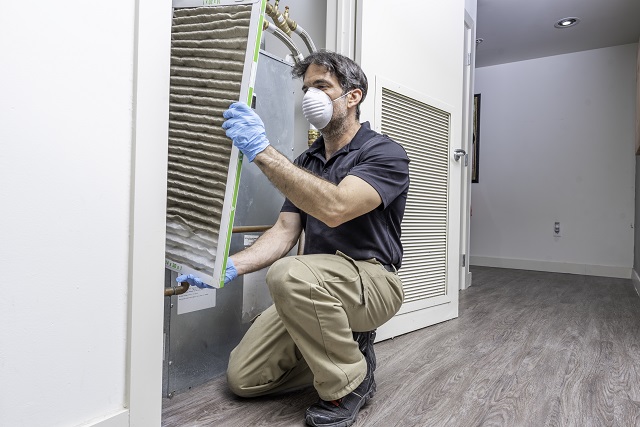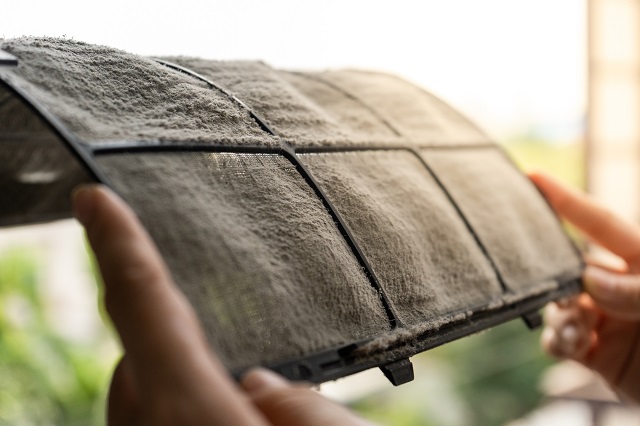
Okay, take a deep breathe in. And now, let it all out. It’s easy to forget the important role that good, clean air plays in living a healthy life. In fact, air quality in the home is believed to promote improved health and even prevent illnesses like pneumonia. However, most people don’t even notice the air around them unless the quality is poor.
You’re probably familiar with air filters and their intended purpose, but do you know how to ensure they’re working the way they should be? And can you tell whether they’re working as they should? You can’t exactly see all the pollutants hovering in the air, as they’re generally invisible to the naked eye. So, how do you know?
Here are some ways to check the quality of air filters.
1. Change The Filter Regularly
Contrary to popular belief, the actual function of an air filter isn’t typically to purify the air at all. They’re designed to help trap dust, hair, and other larger particles, but most standard filters are not fine enough to capture legitimate allergens, pollen, or mold spores. To ensure not only the quality of the air filter, but the quality of air itself, they should be changed frequently. Failing to change the filter could mean you’re actually circulating more dust and particles than without one.
2. Using A Filter Indicator
One of the easiest ways to tell if your air purifier is doing its job is to buy a filter with an indicator light pre-installed. This should indicate when the filter is functioning as intended, or whether it’s in need of cleaning or repairs.
All filters lose their ability to remove pollutants from the air over time, and will eventually need to be replaced, as we touched on above. But if you purchase one with an indicator, you’ll know when it’s time, rather than having to check it manually. Reputable sites like filterking.com/air-filter-guides/are-expensive-air-filters-worth-it provide valuable advice on the different types of filters, and whether expensive filters with indicators are worth the price tag.
3. The MERV Method
The MERV, or Minimum Efficiency Reporting Value, is a rating that illustrates just how efficient an air filter is at trapping, absorbing, and filtering pollutants. When choosing a filter, you’ll want to find filters that carry a higher MERV rating, as they’ll generally have a much tighter mesh weave that can block small particles. Generally, standard filters correlate to an 8 on the MERV scale. If you’re looking to go premium, find a filter that falls somewhere around a 10 or 12 on the MERV scale. Not only do premium filters handle regular dust and other common pollutants, but also some bacteria, viruses, and molds.
However, if the MERV rating of a filter is too high, then the filter will actually begin to constrict airflow and become somewhat counter-productive.
4. Adjusting Manually
It’s a bit of gamble to inherently trust an electronic system when it comes to determining quality. So, it’s best not to rely entirely on an in-built indicator alone. It may or may not be giving you a false read. Use it as a general guideline when understanding quality, but make sure to check your filter manually from time to time. You’ll know the filter needs to be cleaned when you can physically see debris, dust, and/or hair in the filter.
Keep in mind, this method generally only works for HEPA filters, as typical carbon filters will not display any outward signs of aging. Thus, it’s a good idea to research the specific filter you have installed or are considering buying, and learn about how to adjust it.
5. Air Quality Monitors
Most of the methods provided above are really proactive ways to assure the quality of an air filter. But, at best, they are imprecise. The most effective way is to install an air quality monitor. These devices are sold separately from both the filter and the purifier themselves, however, they provide the most intelligent analysis of the air in your home, and also of the filter itself. They’ll allow you to measure how the purifier/filter is performing, and help you to make the most educated hypothesis on how efficient your current setup is.
Conclusion
These days, there are countless air filters on the market, from basic manual products to premium filters fitted with electronic indicators. It’s a personal choice which system you prefer to put in place, but no matter the option you choose, all filters must be monitored regularly. Checking the quality of your air filter will ensure that you’re not inhaling dust and potentially harmful particles.


